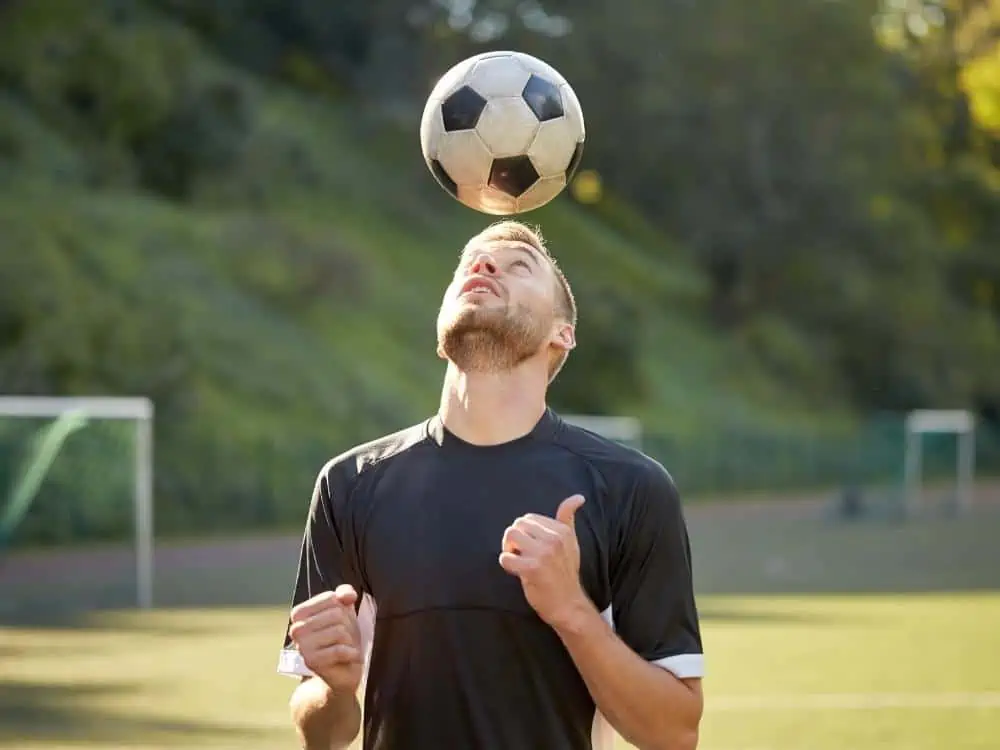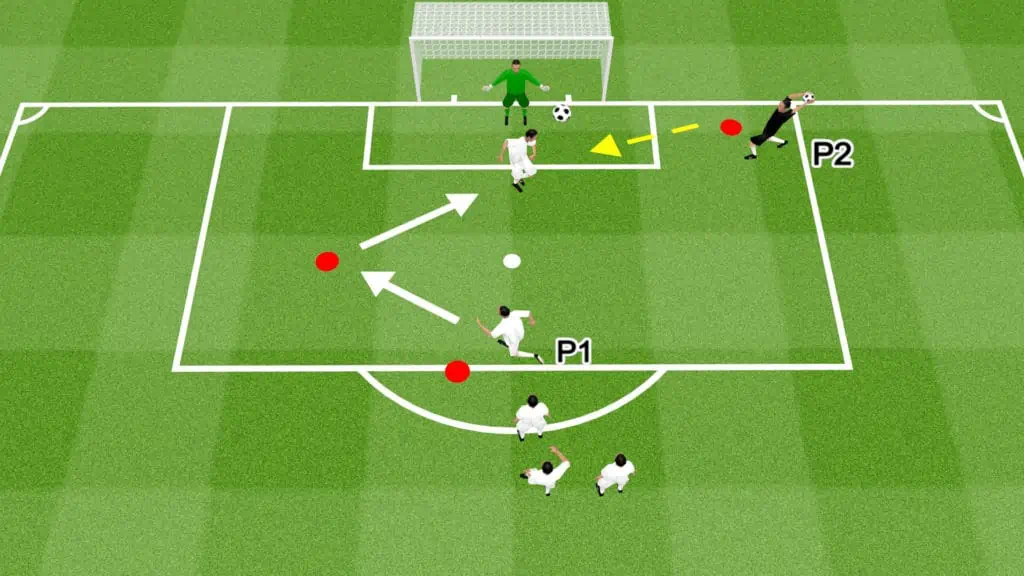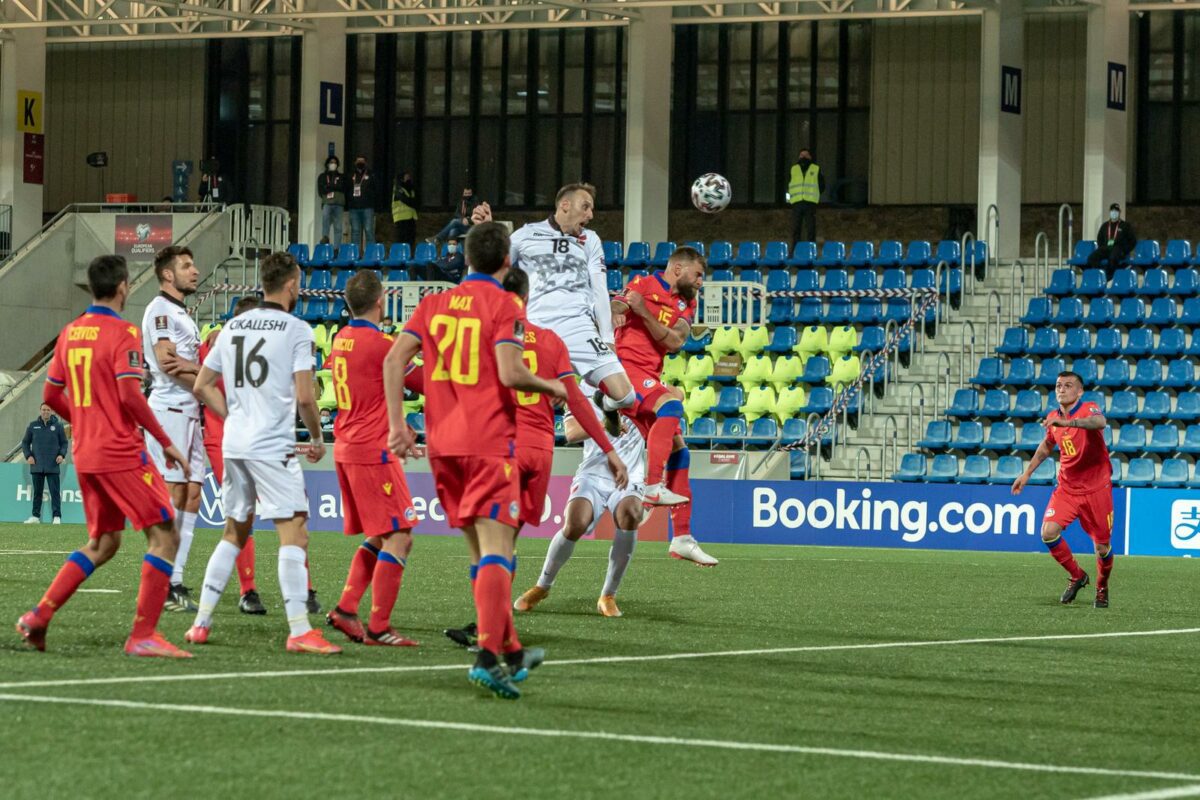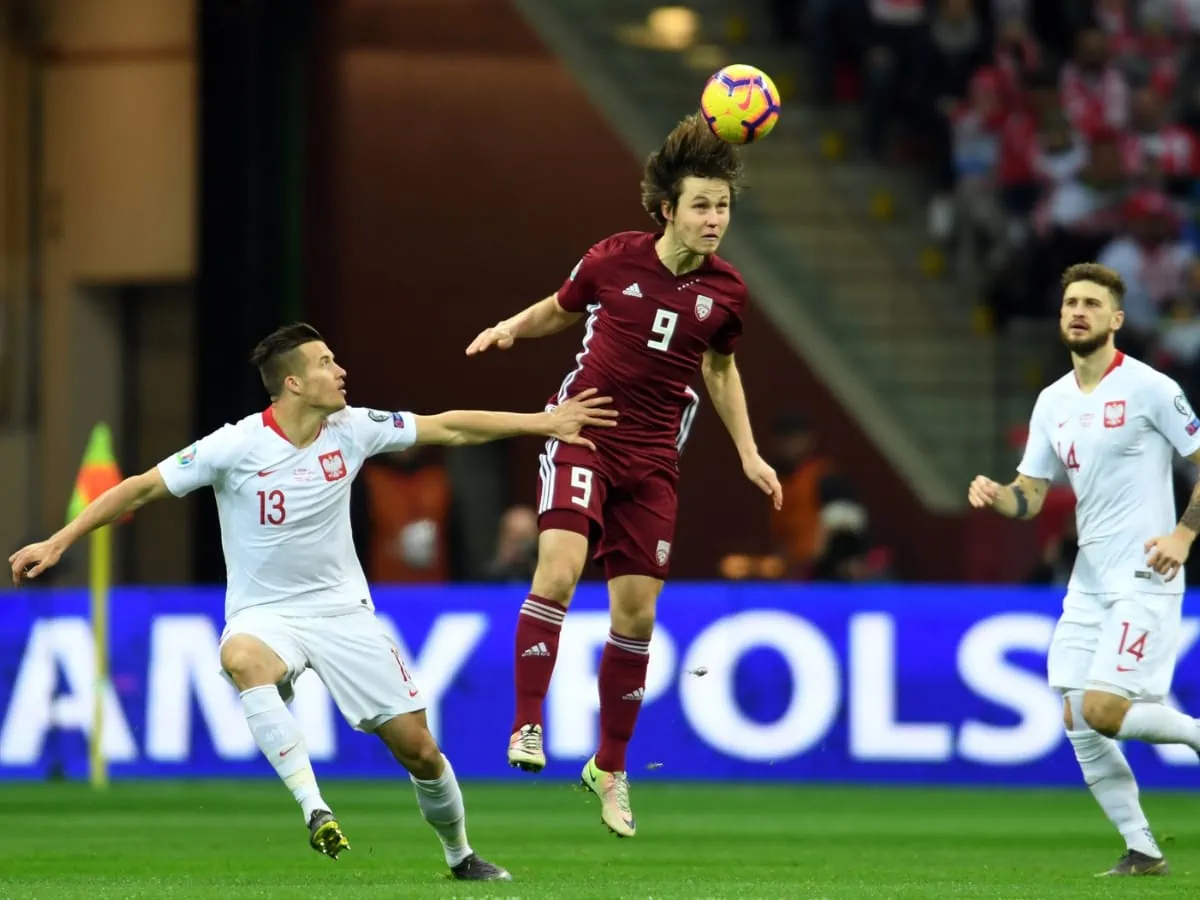Share the post "Heading a Soccer Ball: Defense To Attack"
Modern football relies on soccer ball heading in offensive and defensive situations. Whether you’re a forward trying to deflect a cross into the net or a defense clearing a dangerous ball from your penalty area, the technique can change the game. Understanding good heading mechanics and practicing it in various pitch positions is necessary to master this ability.
My playing experience shows that timing, location, and posture are important to heading. Attacking headers require precision and power, while defending headers emphasize height and distance. Heading the ball requires different techniques at each position on the field.
Improving your heading can make you more versatile on the squad. Targeted exercises and repetition can improve it. Players of any skill level can improve by breaking down the process and practicing on each part. Due to the subtle variances in heading technique, this attention to detail can help players score or defend against crucial goals.

Fundamentals of Heading a Soccer Ball
Heading a soccer ball correctly is key to controlling aerial balls and avoiding injury. Let’s break down the essential components.
Proper Stance
When I’m preparing to head a soccer ball, my feet are shoulder-width apart for balance. I keep my knees slightly bent to help me adjust and generate power from the ground up.
Ball Contact Point
The ideal contact point is the forehead, specifically the part just above my eyebrows. This area provides the most control and power. I make sure to meet the ball precisely on this spot.
Neck and Body Positioning
I always keep my neck muscles stiff to protect myself and ensure effective force transfer to the ball. My body leans into the ball while I keep my eyes open and focused on its trajectory.
Watch our video on how to head a soccer ball;
Heading Techniques and Scenarios
Mastering various heading techniques is essential in soccer, as it can determine the outcome of both offensive and defensive plays. Here’s a closer look at how I approach different heading scenarios depending on my role on the field.
Defensive Heading
In defensive scenarios, my main goal is to clear the ball away from dangerous areas and to disrupt the opponent’s attacks. Timing and positioning are critical. I ensure I’m well-placed between the goal and the attacker, using a strong, directed header to send the ball to a less threatening area or out of play. It’s important to use the forehead to hit the ball, keeping my eyes open and neck muscles firm for a powerful and accurate defensive header.
Attacking Heading
When heading for goal in attacking scenarios, precision and power are my key focus. I aim to redirect crosses, corners, or free-kicks towards the goal, often targeting the corners where the goalkeeper will have difficulty reaching. Here’s my process:
- Positioning: I always position myself keeping in mind the ball’s trajectory and opponent’s location.
- Timing: I jump with the anticipation of meeting the ball at the highest possible point.
- Technique: Using the forehead, I direct the ball downwards, making it more difficult for the goalkeeper to save.
Goalkeeper Heading
As a goalkeeper, heading the ball is less common but equally important. My objective is to prevent scoring opportunities by intercepting crosses or long passes within my area. The technique is slightly different as I need to:
- Assess the situation: Before leaving my line, I quickly judge the flight of the ball and the position of oncoming attackers.
- Use my hands if possible: Heading is a last resort. If I can catch or punch the ball, I will opt for that.
- Head the ball safely: If heading is the only option, I aim to clear the ball high and wide, away from the center of the field where attackers may lurk.
Position-Specific Heading Skills
In soccer, each position demands a unique set of heading techniques to excel. I’ll walk through the specific skills required for forwards, midfielders, defenders, and goalkeepers.
Forwards and Strikers
For me, as a forward or striker, precision and power in heading are crucial for finishing crosses and scoring goals. My objective is to direct the ball downwards towards the goal, making it harder for the goalkeeper to save. I importantly need to:
- Position myself: Stay between the goalpost and the last defender.
- Timing: Jump at the right moment to meet the ball at the peak of my leap.
Midfielders
I, as a midfielder, must be adept at both defensive and offensive heading. Here’s how I accomplish it:
- In Defense: Clear the ball safely towards the sidelines.
- In Attack: Use a softer touch to flick the ball on for forwards or to maintain possession.
Defenders
As a defender, my heading skills are primarily defensive. My role includes:
- Clearances: Head the ball away from the danger area with strength.
- Marking: Leverage height and positioning to dominate aerial duels.
Goalkeepers
Although rare, there are moments when I, the goalkeeper, have to use my head too, especially when outside the penalty box:
- Quick Decisions: Decide whether to catch or head the ball to a teammate.
- Clearance: When off my line, head the ball away from the goal area to deny scoring opportunities.

Training and Drills
To excel in heading a soccer ball, I incorporate a variety of training drills that focus on different aspects of heading. These drills improve technique, timing, and spatial awareness, regardless of my position on the field.
Solo Heading Drills
Balloon Practice:
I start by hitting a balloon into the air with my head. Since it moves slower than a ball, I have more time to focus on my form and the point of contact on my forehead.
Wall Heading:
I use a wall to practice headers by throwing the ball against it and meeting it with a firm header back. This allows me to work on my precision and power.
Partner Heading Drills
Throw and Head:
My partner and I practice headers where they throw the ball towards me at different heights and angles, and I return it with a head. We keep the distance short to emphasize control.
Movement Headers:
I jog side-by-side with my partner, who holds the ball. They toss it up for me to head while on the move, imitating match scenarios.
Team Heading Exercises
Crossing and Finishing:
In a group, I work on receiving crosses from teammates and directing the ball towards goal with a header. This simulates actual game situations.
Defensive Heading Circle:
My team forms a circle, and a coach or player lobs the ball towards a random player, who must then head it clear.
Using a mix of these solo, with a partner, and team drills ensures I keep my heading skills sharp and effective in any match scenario.

Safety and Injury Prevention
In this section, I’ll cover essential strategies for avoiding injuries while heading a soccer ball. My focus is on understanding concussion risks, strengthening exercises for the neck, and consistent practice of the correct technique.
Concussion Awareness
I understand that concussions are a serious concern when it comes to heading. It’s crucial for me to recognize the symptoms, such as headaches, dizziness, or confusion, which may indicate a concussion. I make it a point to stay informed on the latest guidelines and protocols for concussion management and return-to-play.
Symptoms Checklist:
- Headache or “pressure” in head
- Nausea or vomiting
- Balance problems or dizziness
- Double or blurry vision
- Sensitivity to light or noise
Neck Strengthening
To protect myself, I focus on neck muscle exercises which are pivotal in reducing the impact force of heading a ball. I include exercises like:
- Isometric neck exercises
- Neck flexion and extension
- Lateral neck resistance
These exercises enhance the stability and shock absorption capability of my neck muscles.
Proper Technique Reinforcement
I am aware that heading technique is not innate; it requires ongoing reinforcement. My goal is to ensure my head, neck, and body are correctly aligned when making contact with the ball.
Technique Checklist:
- Eyes on the ball
- Use the forehead to contact the ball
- Keep the neck stiff and chin tucked
I practice these techniques repeatedly to make them second nature, mitigating the risk of injury.
Advanced Heading Strategies
In advanced play, heading the ball becomes a refined skill that demands precision and timing. I’ll cover specific tactics to enhance your ability to score, assist, and defend with headers.
Set Piece Headers
During set pieces like corners or free-kicks, precise positioning and timing are crucial. I make sure to run in curves to avoid defensive holds, targeting where the ball will land rather than where it is. For power, I leap off my stronger leg and snap my head toward the goal, aiming to direct the ball into the corners where keepers have a harder time reaching.
Flick-Ons and Redirects
When I’m looking to flick the ball on or redirect it, my focus is on altering the ball’s trajectory with finesse rather than power. Soft touches are key, using the forehead or glancing off the top of my head to redirect crosses or throw-ins to a teammate’s run or into open space, adding an element of surprise to our offensive plays.
Defensive Clearances
When clearing the ball defensively, safety and distance are my main priorities. I use the top of my forehead to drive the ball away as far as possible, aiming high and wide to avoid immediate danger. It’s vital to anticipate the ball’s path and my jump well in advance, ensuring I make a well-timed, forceful contact, sending the ball out of trouble zones into safer areas on the pitch.
Player Development
In this section, I cover the pathways and considerations that I believe are pivotal in honing the heading skill among soccer players across different stages of their development.
Youth Training Considerations
When I approach training younger players, my primary concern is safety. Research indicates that players under the age of 12 should limit heading due to potential risks to brain development. Consequently:
- Training Focus: Use lightweight or foam balls for practice to lessen impact.
- Technique Emphasis: Prioritize developing neck muscles, and ensure proper technique from the start to prevent injuries.
Progression and Skill Assessment
As players mature, I gradually introduce regular soccer balls into training and assess their heading proficiency. Progression can be charted through a simple table I often use, such as:
| Age Group | Training Focus | Evaluation Points |
|---|---|---|
| 12-14 | Technique refinement | Accuracy, Consistency |
| 15-17 | Power and timing | Force, Timing |
| 18+ | Tactical application | Decision Making, Precision |
Using this structure helps me evaluate and guide my players through their development stages effectively.
Competitive Heading Tactics
Once players reach a competitive level, my objective shifts to integrating heading into tactical play. Strategic planning involves:
- Set Pieces: Training to attack or defend corners and free-kicks using headers.
- In-Play: Encouraging strikers to redirect crosses and defenders to clear crosses effectively.
I work on enhancing players’ anticipatory skills, helping them make split-second decisions which often dictate the success of heading in live match scenarios.

Mental Aspects of Heading
Heading a soccer ball requires not only physical skill but also a strong mental game. Key mental aspects include building confidence, developing spatial awareness, and honing timing and anticipation.
Confidence and Fearlessness
For me, confidence is crucial when heading a ball. It’s about being bold enough to go for a header, despite the risks of physical contact. This fearlessness often makes the difference between winning or losing a header.
- Believe in my ability to win every aerial duel
- Trust in my technique to avoid injury
Spatial Awareness
I find that good spatial awareness allows me to effectively judge the ball’s flight path and position myself accordingly. It’s like having an internal GPS, guiding me to be in the right place at the right time.
- Continually scan the field to assess the positions of other players
- Adjust position based on the trajectory of the incoming ball
Timing and Anticipation
Timing is everything when heading the ball. Anticipating when to jump and how the ball will come down lets me connect effectively and direct it where I want it to go.
- Predict opponents’ movements and the ball’s descent
- Execute my jump with precision to meet the ball at the optimal moment
Nutrition and Conditioning
To excel at heading a soccer ball, I find it vital to maintain a balanced diet and regular conditioning. The right nutrition fuels my body for peak performance, while tailored training enhances strength and endurance, and efficient recovery ensures I stay game-ready.
Diet for Optimal Performance
My diet focuses on macronutrients balanced specifically for soccer: carbohydrates, protein, and fats. Carbohydrates are my main energy source, particularly before intense heading drills or matches. I aim for complex carbs like whole grains, fruits, and vegetables. Protein is crucial for muscle repair, so lean meats, fish, eggs, and legumes are staples in my meals. Healthy fats from avocados, nuts, and olive oil help with long-lasting energy and inflammation reduction.
- Carbohydrates: 55-60% of my daily intake, mostly complex carbs.
- Protein: Roughly 1.2 to 1.4 grams per kg of my body weight.
- Fats: Limited to 20-30% of my daily intake, focusing on unsaturated fats.
Strength and Endurance Training
Strength training is a key part of my routine to power my heading ability. Core exercises, like planks and bridges, improve my body stability for airborne challenges, while neck and shoulder exercises increase my heading power. To build endurance, I incorporate aerobic activities such as running and cycling, which help me sustain effort throughout the match.
- Core Strength: Planks (3 sets of 1 minute each)
- Neck Strength: Isometric neck exercises (3 sets of 12 reps each side)
- Endurance Training: Minimum of 150 minutes of moderate aerobic activity per week
Recovery and Rest
After intense training or a match, I prioritize recovery. Good quality sleep—approximately 7-9 hours a night—is non-negotiable for my body to repair and build muscle. I also incorporate stretching and foam rolling to reduce muscle tightness and soreness. Active recovery, such as easy swims or walks, helps me maintain flexibility and blood flow without overexerting my muscles.
- Sleep: 7-9 hours per night
- Stretching: Daily, focusing on neck, shoulders, and back
- Active Recovery: Low-intensity exercise, 20-30 minutes on off days
Share the post "Heading a Soccer Ball: Defense To Attack"
Joel is a seasoned soccer journalist and analyst with many years of experience in the field. Joel specializes in game analysis, player profiles, transfer news, and has a keen eye for the tactical nuances of the game. He played at various levels in the game and coached teams - he is happy to share his insight with you.



